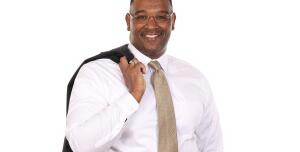7 Tips for Building a Blame-Free Office
 You cannot fix a mistake until you know about it.
You cannot fix a mistake until you know about it.
That’s why smart law firms adopt a “blame free” policy for reporting problems. Such an approach encourages everyone in the firm – from secretaries to senior counsel – to speak up when they run across an error in a case.
Here’s a key component: the whistle-blower can come forward without fear of being punished for an unintentional error – even if they are the culprit.
Some offices even take a “Suggestion Box” philosophy that encourages anonymous reporting.
Whatever. The details are less important than the big picture, which is to create an environment where nobody is afraid to bring problems to light.
Hospitals Help Patients by Eliminating Blame
It works for doctors.
A study conducted at hospitals in North Carolina found that flagging medical errors through a blame-free system yields better care for patients.
At one pediatric clinic that adopted such a policy, the number of reported mistakes jumped from five to 86 per year on average. But that did not mean the quality of care had declined.
“Getting reports doesn’t mean we’re an unsafe practice, it means we’re addressing flaws to make us a better practice,” said Dr. Daniel Neuspiel, the lead author of the study and a hospital director in Charlotte, in a Reuters article.
Hospitals first began taking a hard look at how problems are reported after the Institute of Medicine issued a landmark report in 1999 that estimated nearly 100,000 Americans die each year because of medical errors like botched prescriptions, misread lab tests and delayed treatment. Many of those deaths could have been prevented through prompt reporting and early intervention.
Setting up a Blame-Free System in Your Firm
- Don’t bury your head in the sand. Mistakes happen. Get in the habit of talking about them openly and impersonally. Discuss ways to prevent similar problems from occurring in the future.
- Communication is key. Strive to eliminate cultural, gender or language barriers that might impede the free flow of critical communication.
- Form a “quality control” team. Members should represent every part of the office, including support staff and front desk workers.
- It is not the crime, it’s the cover-up. Bringing problems out into the open is empowering and liberating. It is also the right thing to do.
- Educate everybody. Make sure all employees understand the consequences of mistakes, which can include a malpractice claim or ethics complaint.
- Protect your clients. We have an ethical duty to look out for our clients. Professional pride, fear or embarrassment must be put aside to serve our clients’ interests.
- Report potential problems promptly to Lawyers Mutual. An experienced claims attorney will help you figure out the best way to break the bad news to your client and set about making things right.
And remember: the point is to fix the problem, not to affix blame.
Jay Reeves a/k/a The Risk Man is an attorney licensed in North Carolina and South Carolina. Formerly he was Legal Editor at Lawyers Weekly and Risk Manager at Lawyers Mutual. He wrote the short story “Nylon and Steel” that appears in the latest N.C. Bar Journal. Contact jay@lawyersmutualnc.com, phone 919-619-2441.
Source: Reuters http://www.reuters.com/article/2011/11/21/us-blame-free-idUSTRE7AK1XS20111121




